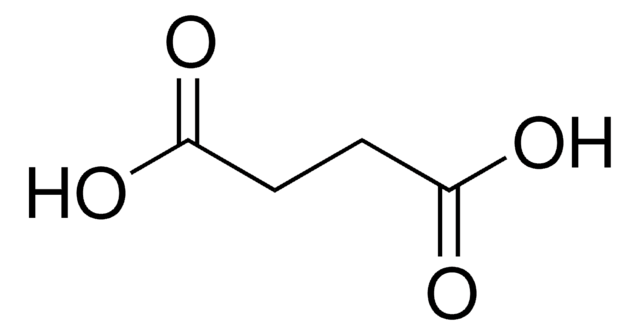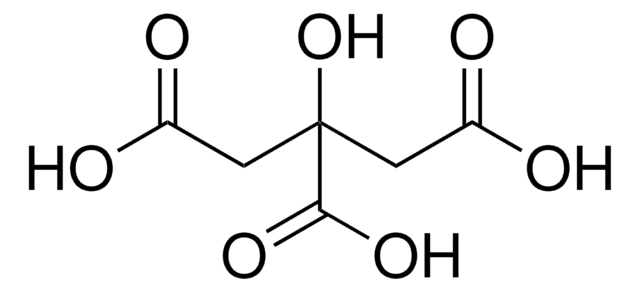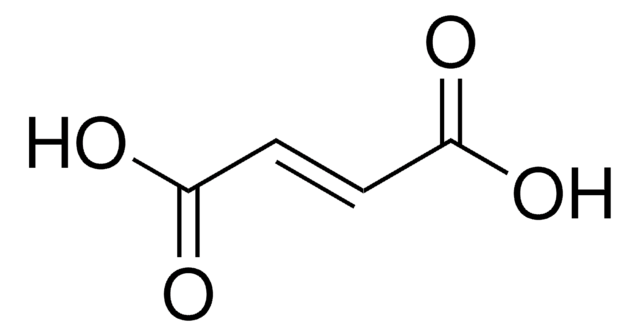14079
Succinic acid
puriss. p.a., ACS reagent, ≥99.5% (T)
Synonym(s):
Butanedioic acid
About This Item
Recommended Products
grade
ACS reagent
puriss. p.a.
Quality Level
assay
≥99.5% (T)
impurities
≤0.001% total nitrogen (N)
ign. residue
≤0.02%
bp
235 °C (lit.)
mp
184-186 °C (lit.)
185-191 °C
solubility
methanol: soluble 0.4 g/10 mL
anion traces
chloride (Cl-): ≤10 mg/kg
phosphate (PO43-): ≤10 mg/kg
sulfate (SO42-): ≤30 mg/kg
cation traces
Ca: ≤50 mg/kg
Cd: ≤5 mg/kg
Co: ≤5 mg/kg
Cr: ≤5 mg/kg
Cu: ≤5 mg/kg
Fe: ≤5 mg/kg
K: ≤50 mg/kg
Mg: ≤10 mg/kg
Mn: ≤5 mg/kg
Na: ≤50 mg/kg
Ni: ≤5 mg/kg
Pb: ≤5 mg/kg
Zn: ≤5 mg/kg
SMILES string
OC(=O)CCC(O)=O
InChI
1S/C4H6O4/c5-3(6)1-2-4(7)8/h1-2H2,(H,5,6)(H,7,8)
InChI key
KDYFGRWQOYBRFD-UHFFFAOYSA-N
Looking for similar products? Visit Product Comparison Guide
Related Categories
Application
- Surfactant/detergent extender/foaming agent
- As ion chelator in the electroplating process
- As a precursor for various industrially important chemicals such as adipic acid, 1,4-butanediol, tetrahydrofuran, N-methyl pyrrolidinone, 2-pyrrolidinone, succinate salts, and γ-butyrolactone
- Synthesis of biodegradable polymers such as polybutyrate succinate (PBS) and polyamides.
signalword
Danger
hcodes
Hazard Classifications
Eye Dam. 1
wgk_germany
WGK 1
flash_point_f
Not applicable
flash_point_c
Not applicable
ppe
dust mask type N95 (US), Eyeshields, Gloves
Choose from one of the most recent versions:
Certificates of Analysis (COA)
Sorry, we don't have COAs for this product available online at this time.
If you need assistance, please contact Customer Support.
Already Own This Product?
Find documentation for the products that you have recently purchased in the Document Library.
Customers Also Viewed
Our team of scientists has experience in all areas of research including Life Science, Material Science, Chemical Synthesis, Chromatography, Analytical and many others.
Contact Technical Service





